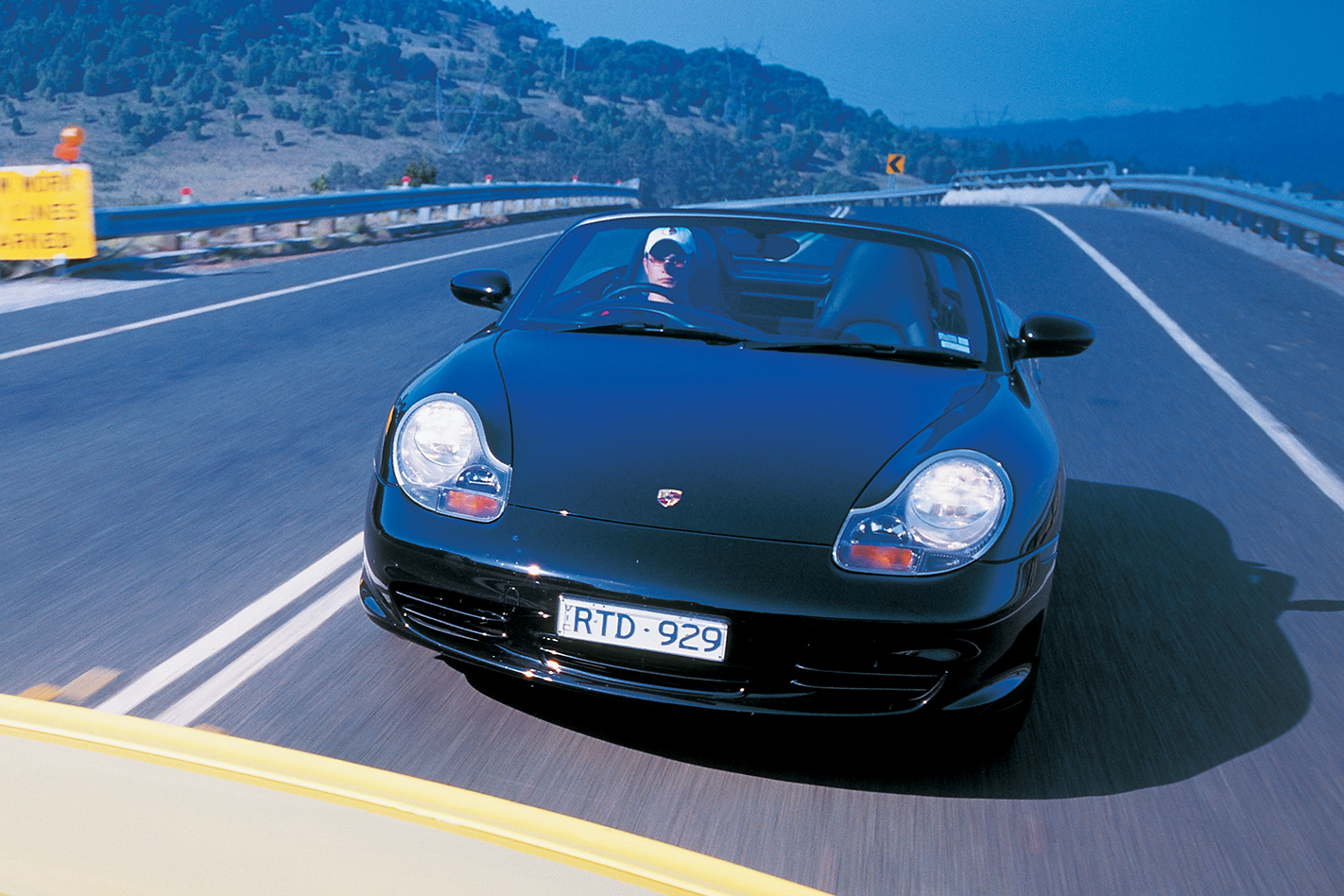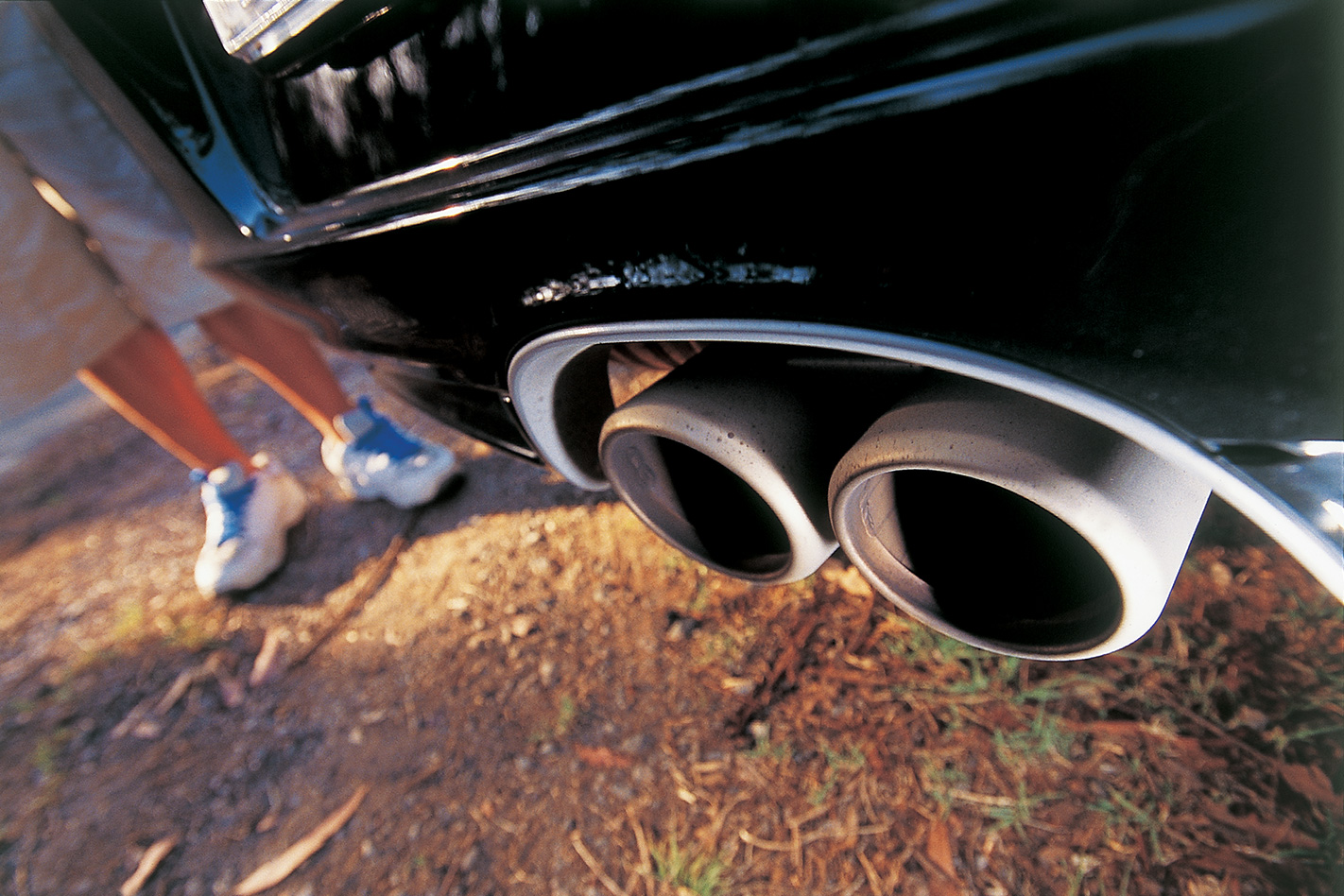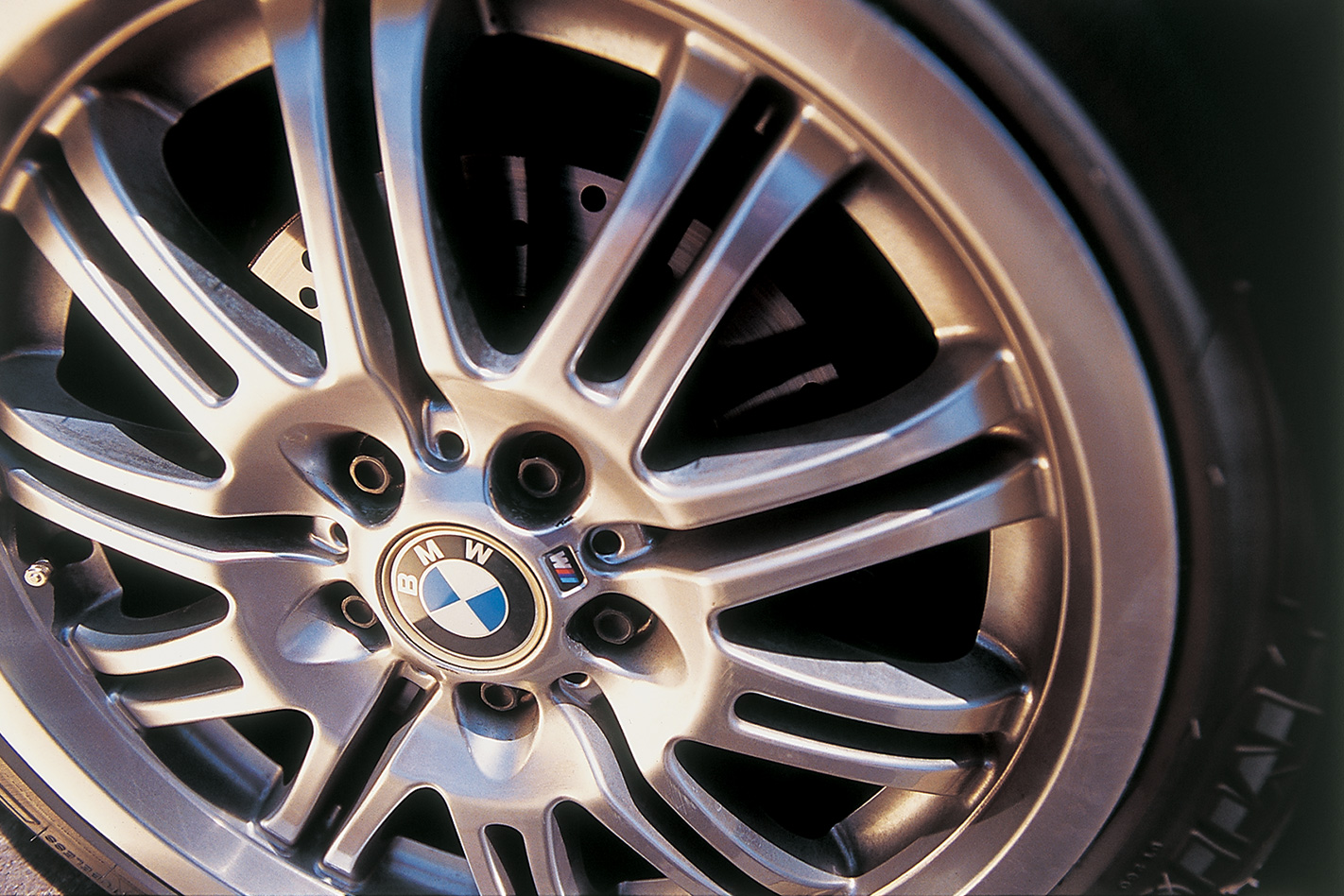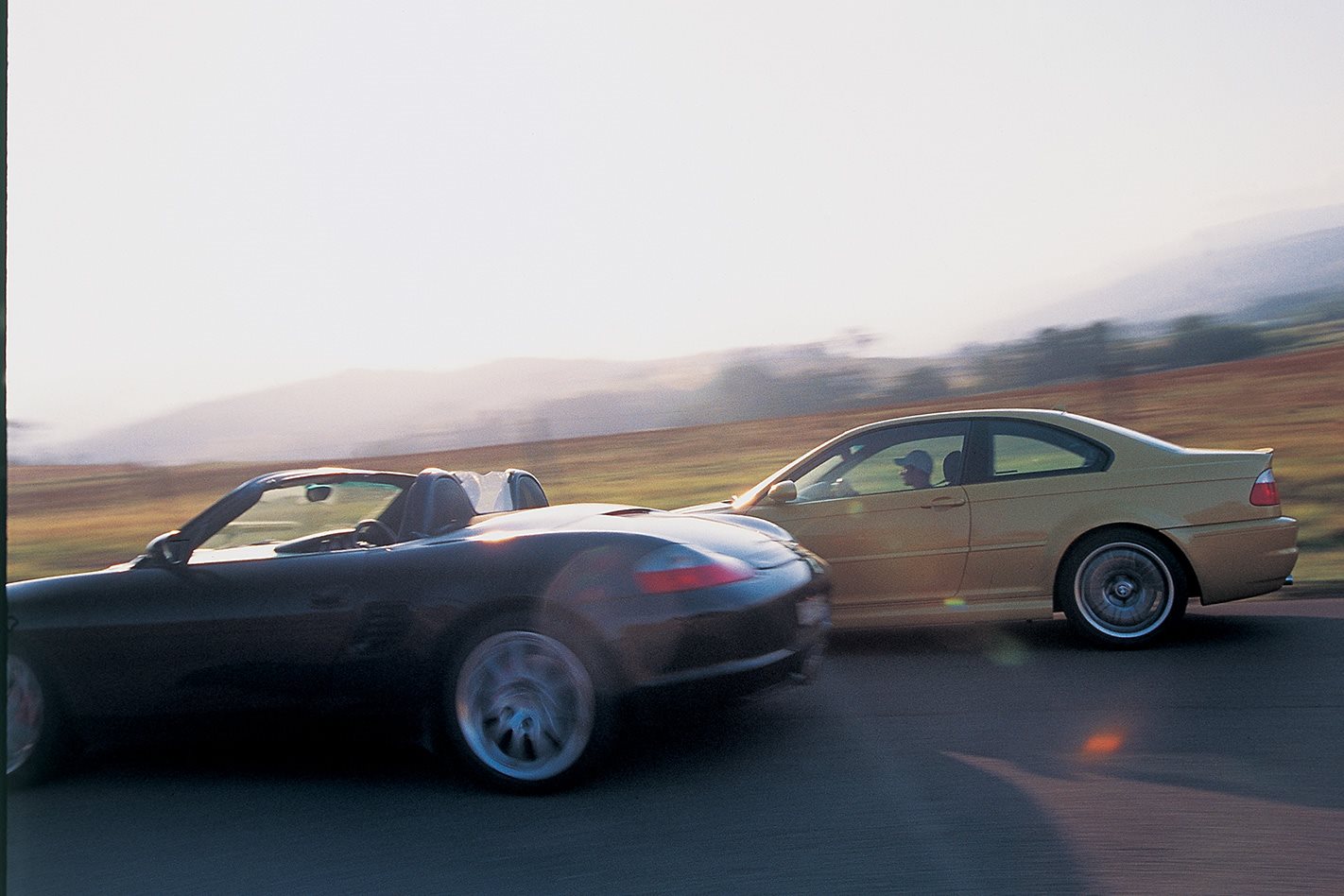Planning for MOTOR’s 2003 Performance Car of the Year is well under way.
This article first published in MOTOR, February 2003
Hell, it would want to be given that it’s due to hit the news stands in our April issue. In amongst the countless phone calls, emails, applications for Lucky Bastard and fact checking, we stumbled across this little gem; of the seven PCOTY held thus far, four have been won by cars wearing Porsche Boxster or BMW M3 badges.

In a quirk of release dates, the Boxster and M3 are always a year or more apart. And with the PCOTY rules stating that only new or revised models shall be eligible, these two champions have never stepped into the ring on the same year. The streak began in 1997 when the upgraded 3.2-litre E36 BMW M3 took the PCOTY gong.


Porsche’s second-placed 911 Carerra took an impressive, but distant, 332 points – just 83 per cent. And every one of the six judges voted the M3 as the winner – the first and only time there’s been a unanimous PCOTY champ.

Then the penny really dropped for us MOTOR morons. We’ve raved about them as individuals and they have won loads of comparos against other competition but these two cars have never, ever laid a glove to each other’s jaws. So this is the first time we’ve had them together on the same day under the same conditions.
Now I’m sure there’s someone out there is sitting on the Toto thinking we’ve lost the plot for comparing two cars that, on the surface, are polar opposites. One’s a mid-engined convertible, and the other’s got a lid and the mill under the nose.

Beneath the M3’s bulging alloy bonnet lurks one of the greatest internal combustion engines ever given fuel and spark. Aside from the numbers – 252 kW at 7900 rpm and 365 Nm at 4900 revs – the 3.2-litre inline six is a technical marvel. The bottom end uses graphite-coated, cast-aluminium pistons delivering an 11.5:1 compression ratio.

Six individual throttle bodies are matched to specific length intake funnels to ensure the best of both power and torque worlds. Raw numbers and tech gibberish are nice and all, but how does this all translate?
Turn the key and there’s torque right off the bat – 80 per cent of peak twist is available from an amazingly-low 2000 rpm. Squeeze the throttle open and those onpaper numbers keep building up the scale.

Power for the updated model is 191 kW at a typically-Porsche low 6200 rpm, up from 185 kW. Torque is closer to the M3 money, with 310 Nm at 4600 revs. Like the M3, the Boxster boxer is a high-tech all-alloy affair with an 11.0:1 compression ratio, Porsche’s VarioCam variable cam timing and dry-sump lubrication.

And with the soft top dropped there is unlimited access to the mechanical melody directly behind your ears. Both engines make you question the whole forcedinduction malarky and both six-speed ’boxes make you wonder why anyone would want an auto.

Porsche engineers quite rightly left the sweet six-speed gearbox in the S well alone when they upgraded the car. They did, however, beef up the clutch. Feel is still a strong suit for the left pedal but across the way the throttle pedal is a little too firmly sprung, often requiring a bigger stab to match the revs on the way back down the scale.

The Boxster comes in at just 1320 kg – 205 kg less than the M3 – and that puts them in the same weight-to-power league. Numbers are good for bar room bench marking, but the real measure of a car is on your favourite piece of road.
And both the M3 and Boxster S will make short work of any piece of tarmac – even if that tarmac is bordered by ripple strips and dotted with flag marshals. Remember, the famed green hell of the Nürburgring is in Porsche and BMW’s backyard, and you’d better believe they made full use of the circuit’s 22 kays of winding blacktop when they developed these babies.

About the only criticism you can level at the steering is the one-size-too-big wheel. No such dramas in the M3. The fat-rimmed leather wheel is just right, even down to the raised stitching in M colours. Jumping directly from the Porsche’s hot seat, the BMW steering may be a touch on the light side.


Power down is otherworldly. Arrive at a tight second corner with plenty of revs on board and you can keep piling on the power. In most situations the engine runs out of revs – or you run out of bollocks – before the S runs out of grip.

If you do a lot of high speed driving on ice it might be a worthwhile box to tick, but in normal conditions the Boxster is unflappable.
Unlike most lidless cars, the Boxster’s handling prowess is not affected by body flex. Aside from the odd squeak from the plastic trim behind the seats, there’s no evidence of less than perfect rigidity – no scuttle shake or deflections through the wheel.

Keep shovelling the revs to the back half mid-corner and the tail comes around in a predictable and controllable arc. Of all the cars we’ve driven, the M3 is second to only the Nissan 200SX as the easiest car to get and hold sideways. If the lock stop is approaching and the exit of the corner isn’t, the M3 remains adjustable.

With such a clear advantage at the Jenny Craig meeting, it’s no surprise the Boxster’s brakes are sharper to respond and offer more feel. Measured against everything else, though, the M3 brakes are simply heroic – it finished third in a field of 21 cars during the PCOTY 100-0 km/h testing.
You can dive on the picks long and hard well past the corner entry point in either car and they’ll remain unfazed. With a steel roof, room for four and a sizeable the M3 holds a practicality advantage over the Boxster.

Not that the Porsche is a Sunday-only sportster. It’s got two useable boots – one in the nose and one behind the engine. Oh, and you can drop the roof and catch some rays whenever the mood takes you. And, of course, that will be enough for plenty.
Despite costing $140,000 each, they are excellent value for money. Yeah, I can’t afford one either, but next to one-trick exotic ponies they look like drive-away bargains.

In their first meeting the M3 and Boxster S have fought each other to a standstill after a 12 round bout and you want me to declare a winner? Well I can’t. If you’re in a position to make this choice in real life – not on paper like us poor motoring journos – you can’t go wrong.
Flip a coin and you’d be very happy. The M3’s honour is still intact. It is still our favourite performance car. But then, again, so is the Boxster S.





